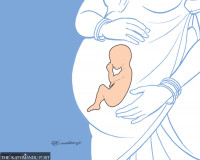Health
Safe motherhood programme faces funding crisis
Rs400 million is immediately required to sustain the programme.
Arjun Poudel
The Ministry of Health and Population says it requires an additional Rs400 million to continue the ‘safe motherhood programme’, which is credited with reducing maternal and neonatal mortality rates in the country.
Officials say they plan to arrange Rs200 million through an internal loan within the ministry and ask the Ministry of Finance for another Rs200 million to continue the programme.
“Around Rs2.5 billion a year is required to conduct the safe motherhood programme throughout the country,” said Nisha Joshi, a public health official at the Family Welfare Division under the Department of Health Services. “We have informed the health ministry about the budget crunch.”
The government’s Safe Motherhood programme is credited with saving hundreds of maternal and neonatal lives every year. In addition to free delivery services, the programme provides mothers and babies with free medical treatment, a transportation allowance, and cash incentives for antenatal checkups.
Women in the mountainous, hilly and Tarai districts receive Rs3,000, Rs2,000 and Rs1,000, respectively. Additionally, a cash bonus of Rs800 is provided to mothers who complete all eight antenatal checkups.
The institutional delivery rate, which was around 18 percent before 2009, when the government declared free institutional delivery services, has increased to 80 percent.
“We have been collecting bills from hospitals providing safe motherhood services,” said Joshi. “As it is a national priority programme, we cannot discontinue the services. We will send invoices to the Health Ministry for reimbursement.”
Nepal reduced the maternal mortality rate from 239 per 100,000 births in 2016 to 151 per 100,000 in 2021, according to the national census carried out by the National Statistics Office.
Earlier, the country had cut the maternal mortality rate from 539 per 100,000 births in 1996 to 239 per 100,000 births in 2016—for which the country even received a Millennium Development Goals award.
The health target under the UN’s Sustainable Development Goals is to reduce the maternal mortality rate to 75 per 100,000 births by 2030.
Fatality due to poor access to medical services during childbirth remains a leading cause of women’s death in Nepal.
Data provided by the division show that at least 50 women from 51 districts succumbed due to complications during childbirth since the start of the current fiscal year.
Division’s data show that at least 190 women from 51 districts died from complications during childbirth in the fiscal year 2023-024. In the fiscal year 2022-023, 191 maternal deaths were recorded across 49 districts.
Health officials concede that the actual number of maternal deaths due to birth-related complications could be much higher, as maternal and perinatal death surveillance is being carried out in only 51 districts of 77 districts.
According to the latest census report, 622 maternal deaths were recorded in a year. Officials at the health ministry concede that the deaths reported from 51 districts represent only around 30 percent of the total maternal deaths across the country.
Lack of maternal and perinatal death surveillance programmes in all districts is the main reason for the underreporting of maternal deaths, and the budget shortfall is to blame for the inability to carry out maternal and perinatal death surveillance, officials say.
Maternal and perinatal death surveillance is a key intervention to improve maternal, perinatal, and neonatal survival rates. Experts say such surveillance provides an understanding of the number and causes of deaths, enabling more targeted and effective interventions.
The World Health Organisation said maternal and perinatal death surveillance and response (MPDSR) is an essential quality improvement intervention, which permits the identification, notification, quantification and determination of causes and avoidability of maternal and neonatal deaths and stillbirth to orient the measures necessary for their prevention.
According to the UN health body, systematic analyses of overall mortality trends and events and contributing factors leading to individual deaths can identify barriers in health systems and inspire local solutions to prevent such deaths in the future.
Every year, over 600,000 women deliver babies in Nepal.




 6.81°C Kathmandu
6.81°C Kathmandu














